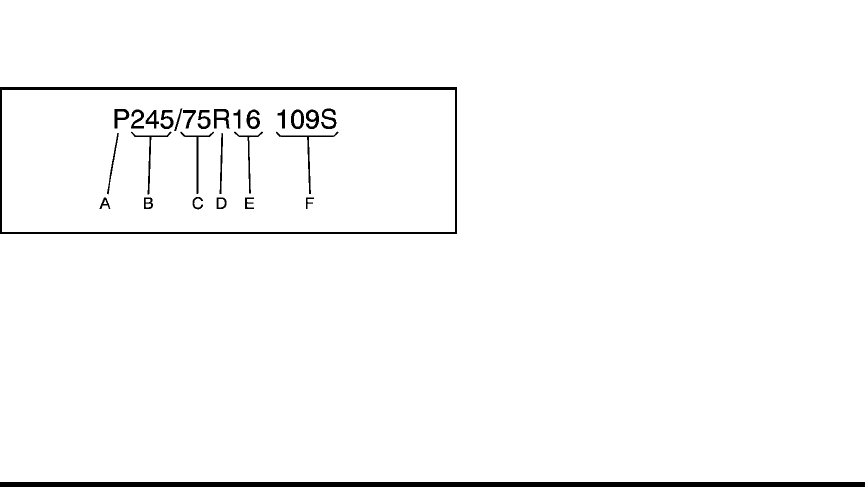
(G) Maximum Cold Inflation Load Limit :
Maximum load that can be carried and the
maximum pressure needed to support that load.
For information on recommen ded tire pressure
see Inflation - Tire Pressure
on page 7‑65
and
Loading the Vehicle
on page 6‑32
.
Tire Size
The following examples show the different parts of
a tire size.
Passenger (P‐Metric) Tire
(A) Passenger (P‐Metric) Tire: The United
States version of a metric tire sizing system. The
letter P as the first character in the tire size means
a passenger vehicle tire engineered to standards
set by the U.S. Tire and Rim Associatio n.
(B) Tire Width
: The three‐digit number indicates
the tire section width in millimeters from sidewall
to sidewall.
(C) Aspect Ratio
: A two‐digit number that
indicates the tire height‐to‐w idth measurem ents.
For example, if the tire size aspect ratio is 75, as
shown in item C of the light truck (LT‐Metric) tire
illustration, it would mean that the tire's sidewall is
75% as high as it is wide.
(D) Construction Code
: A letter code is used to
indicate the type of ply construction in the tire.
The letter R means radial ply construction; the
letter D means diagonal or bias ply construction;
and the letter B means belted‐bias ply
construction.
(E) Rim Diameter
: Diameter of the wheel in
inches.
(F) Service Description
: These characters
represent the load index and speed rating of the
tire. The load index represents the load carry
capacity a tire is certified to carry. The speed
rating is the maximum speed a tire is certified to
carry a load.
7-61


















